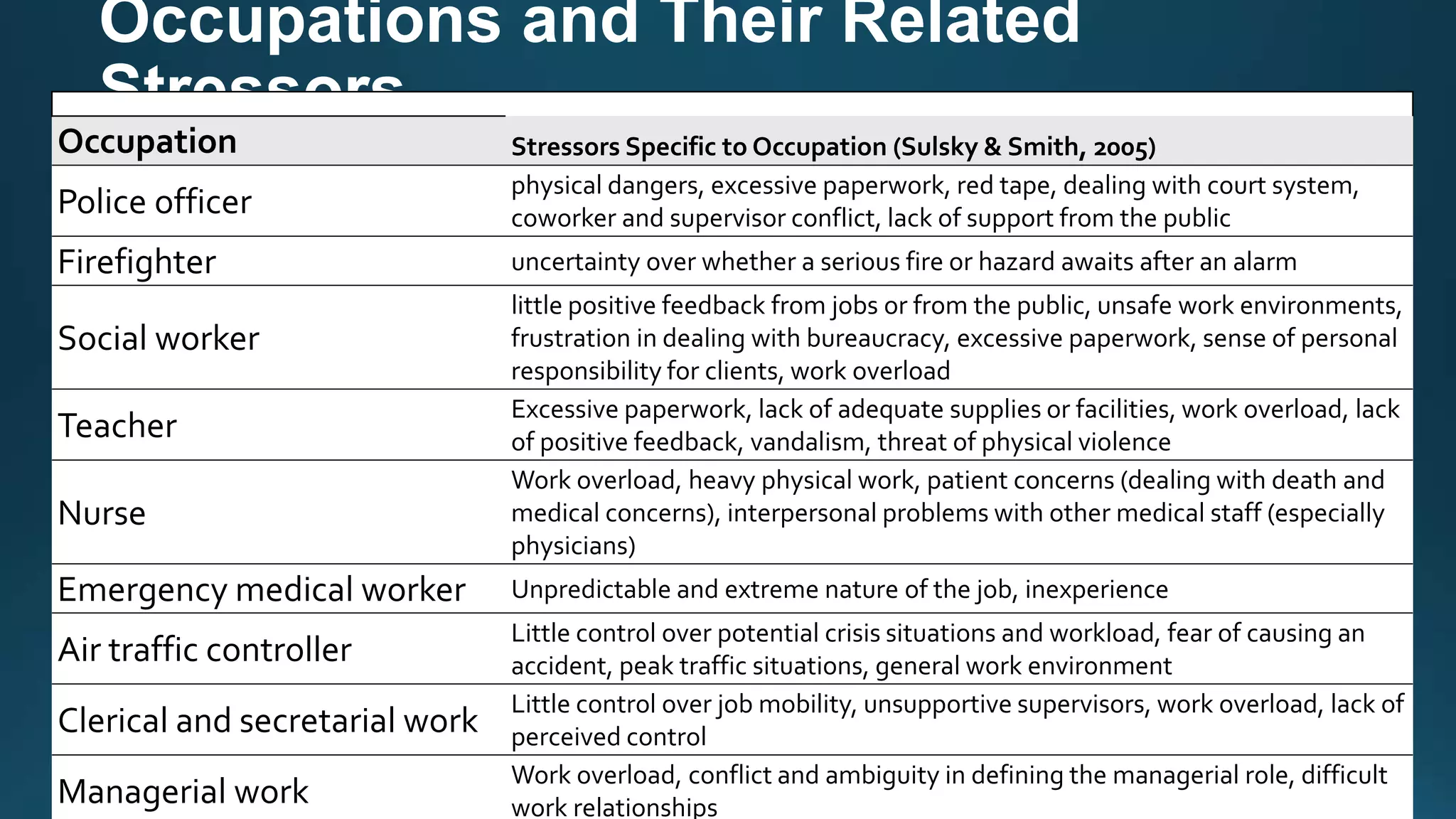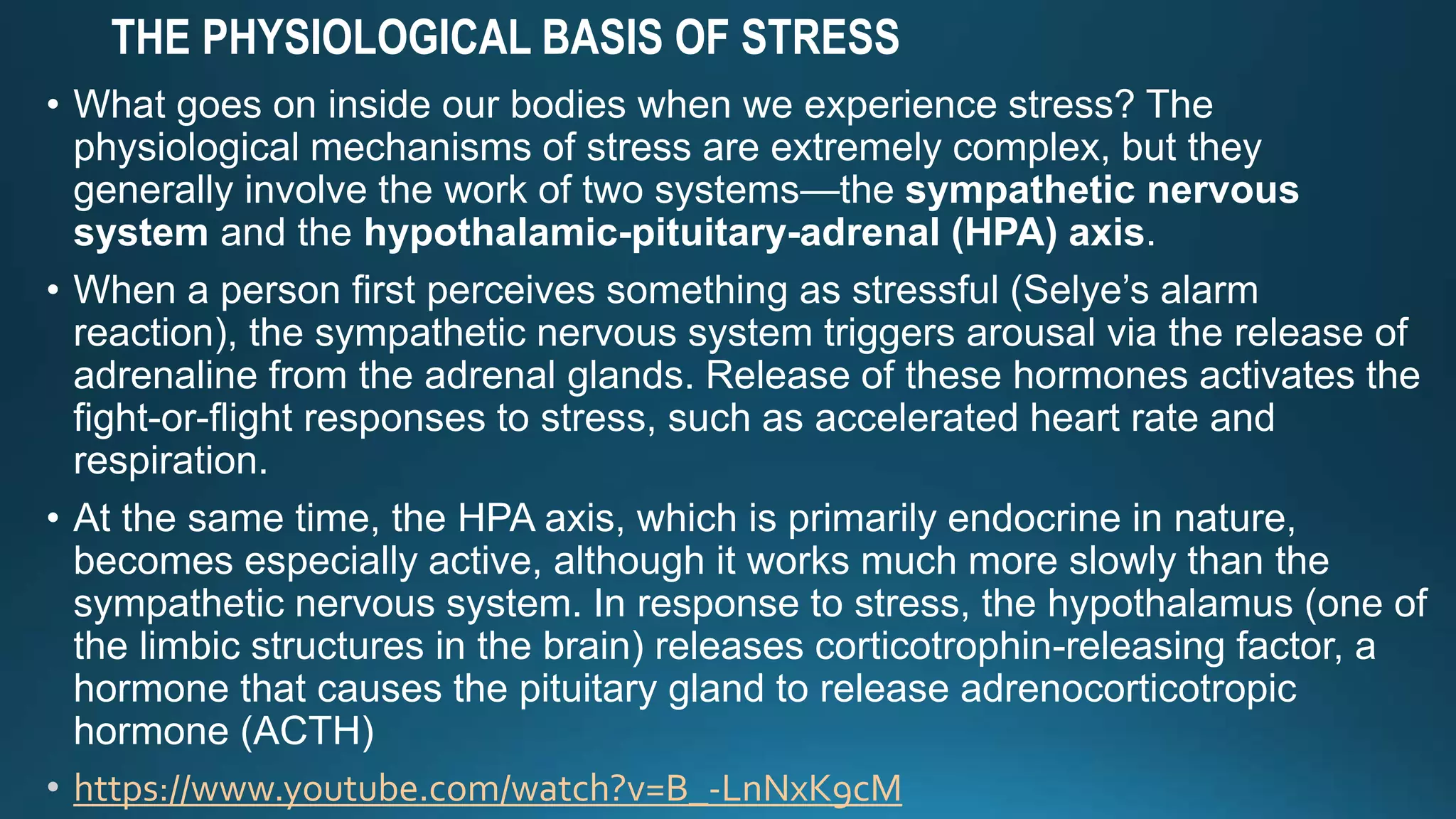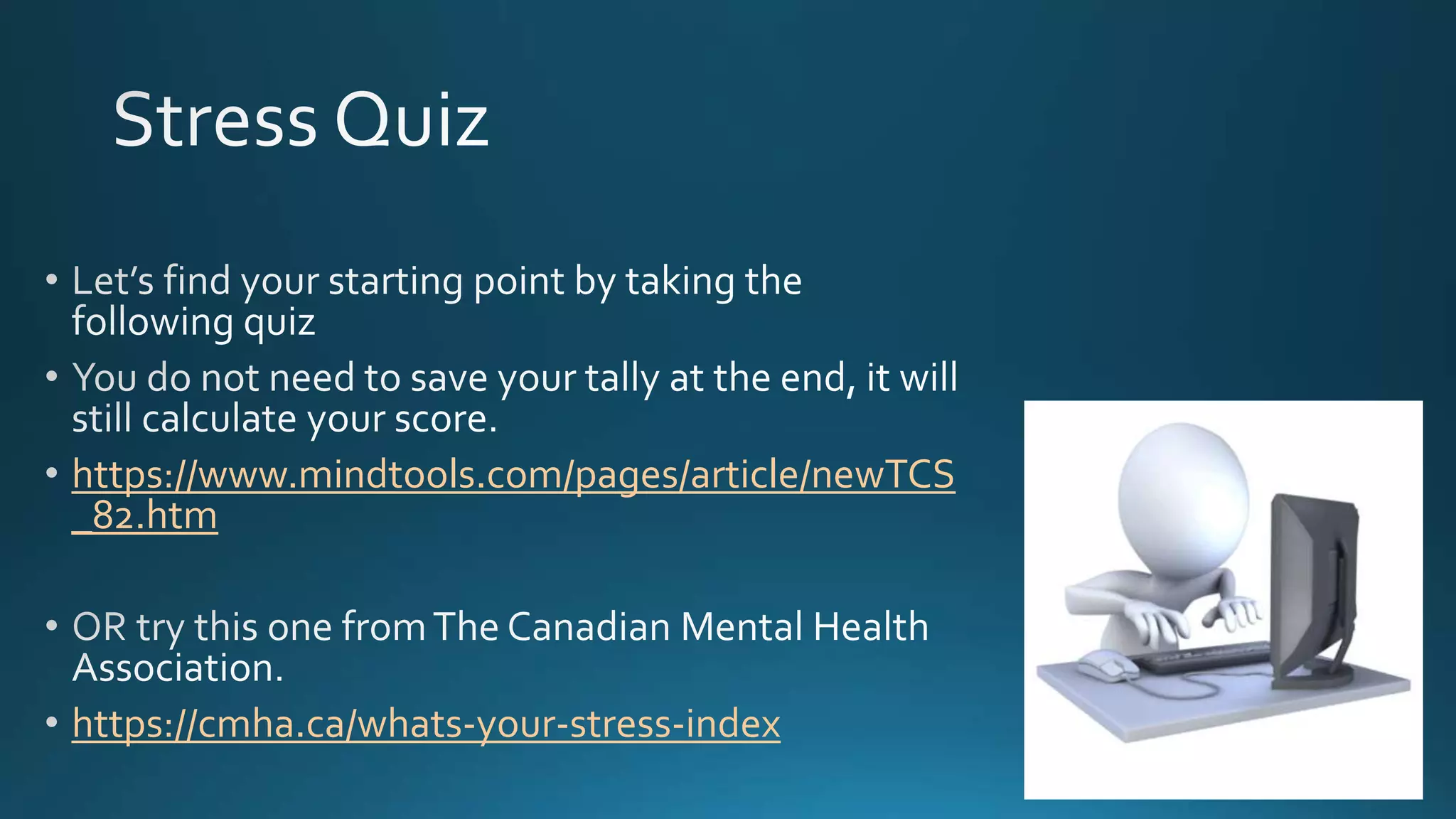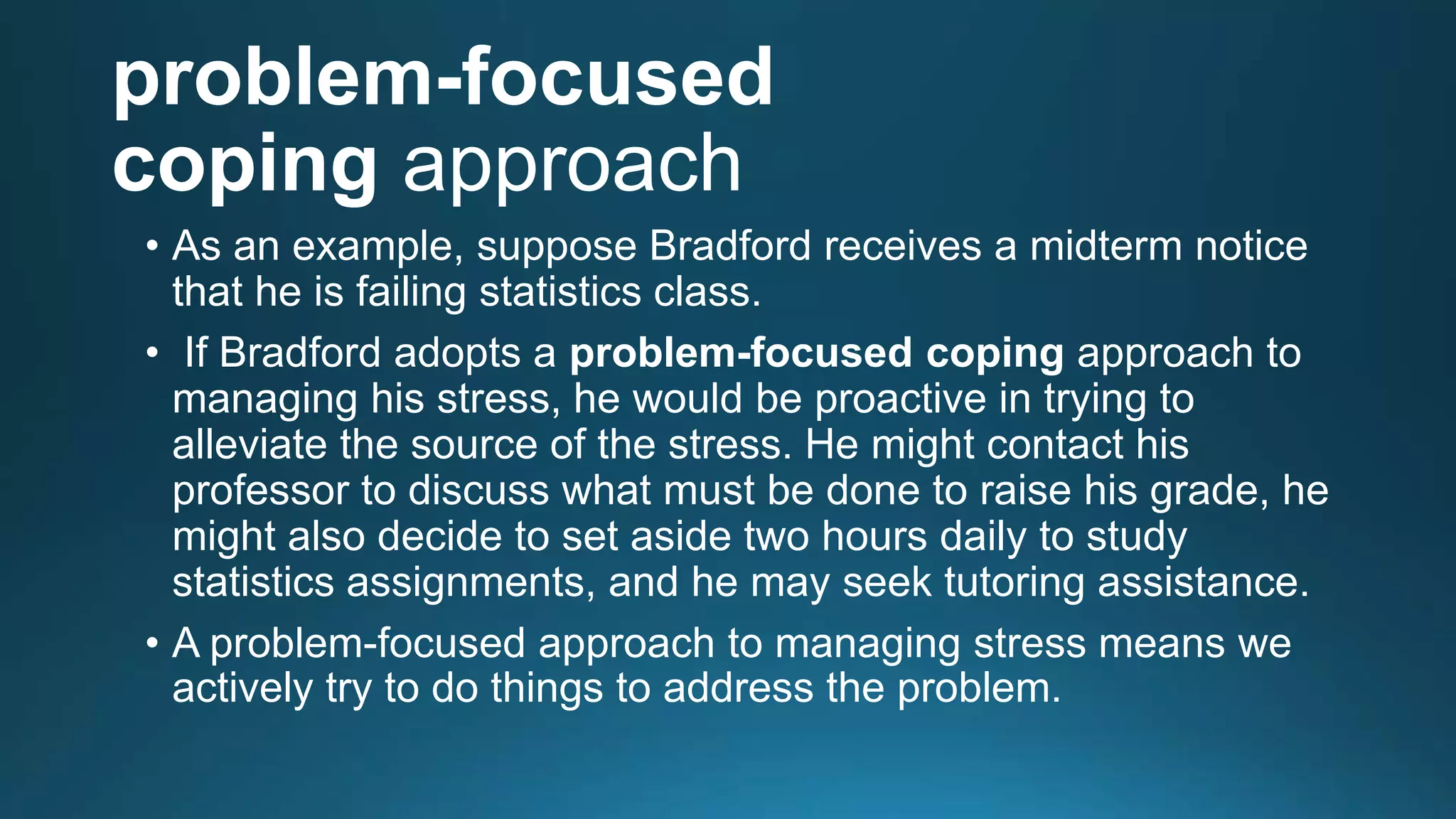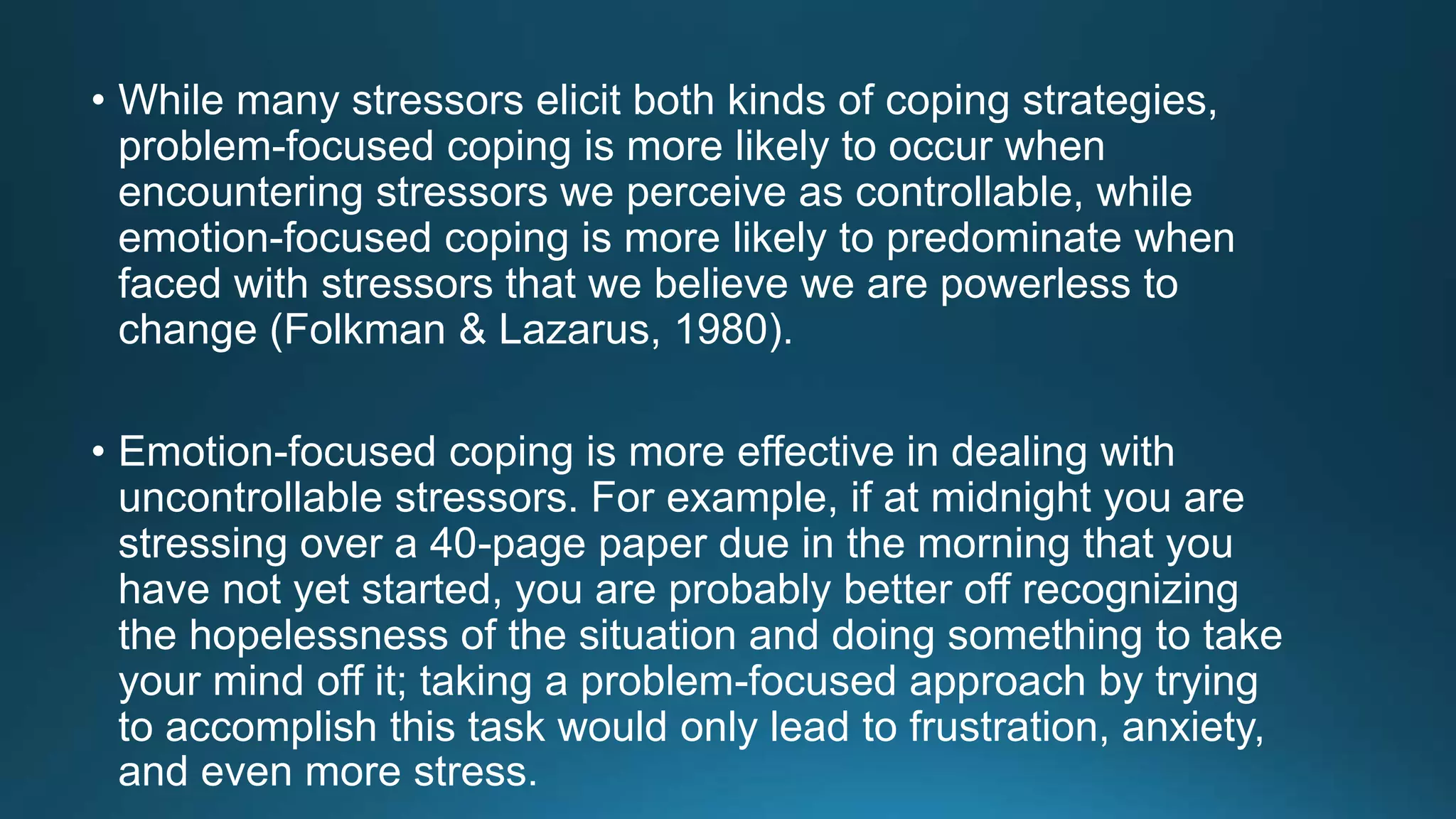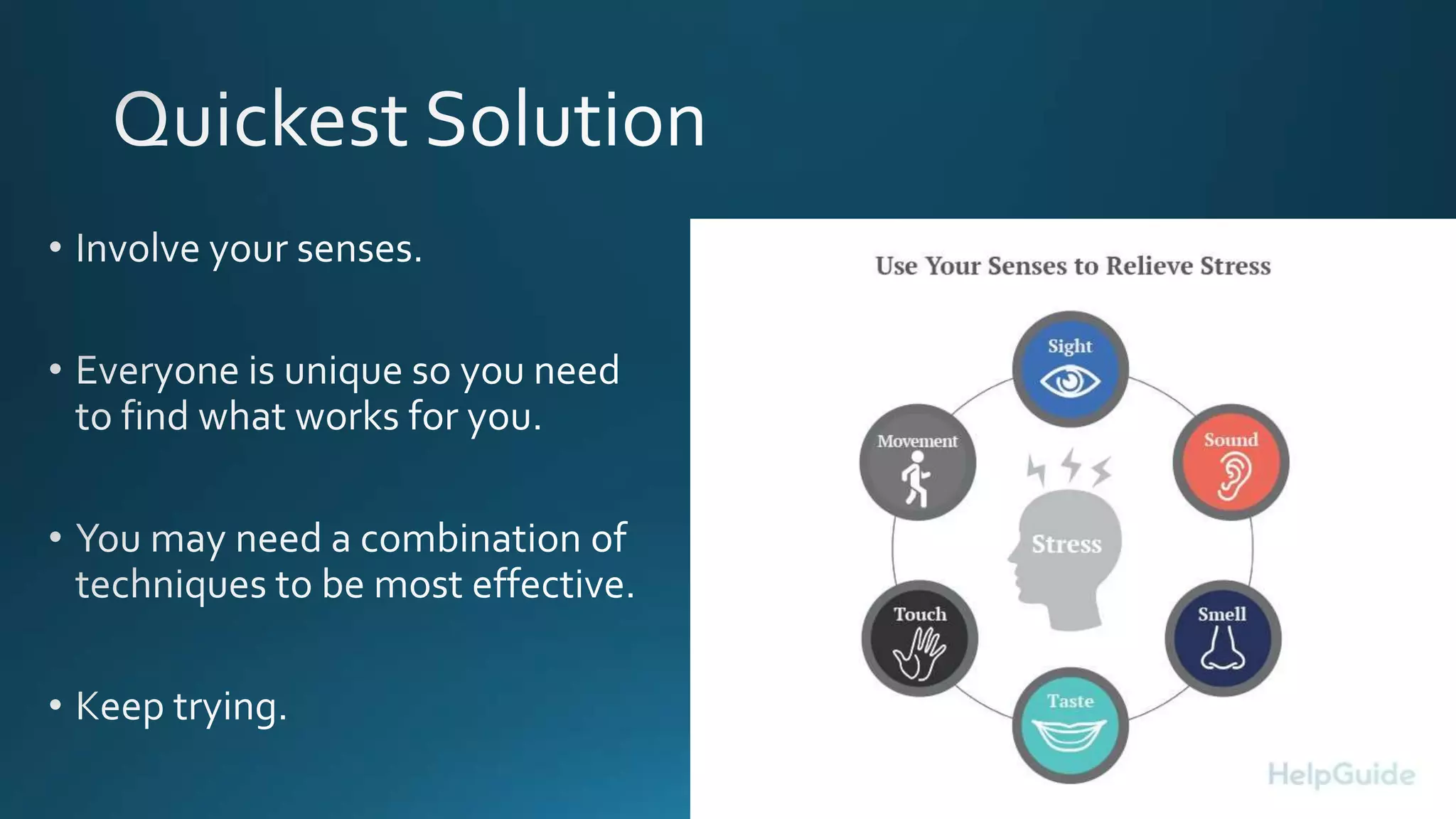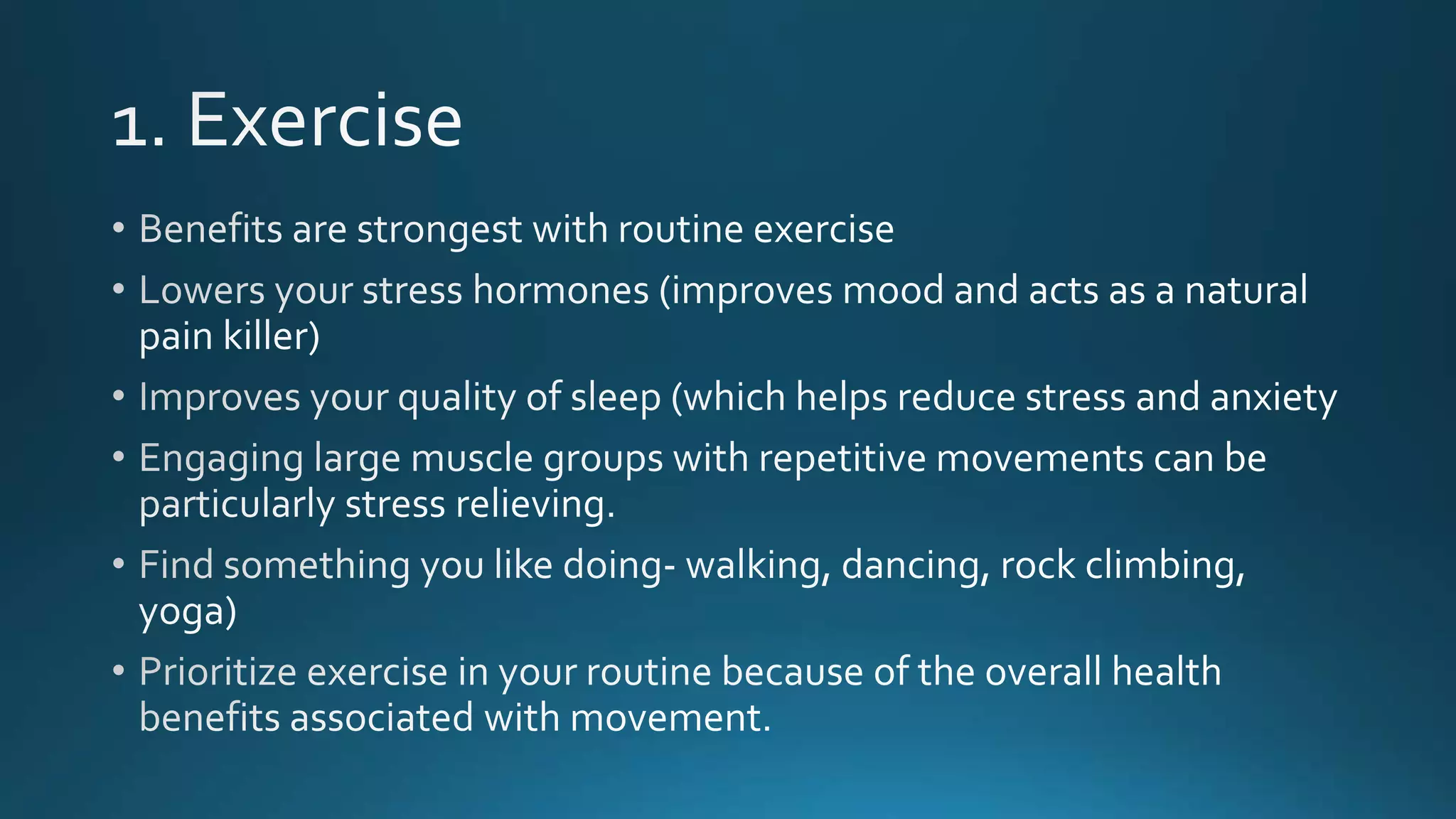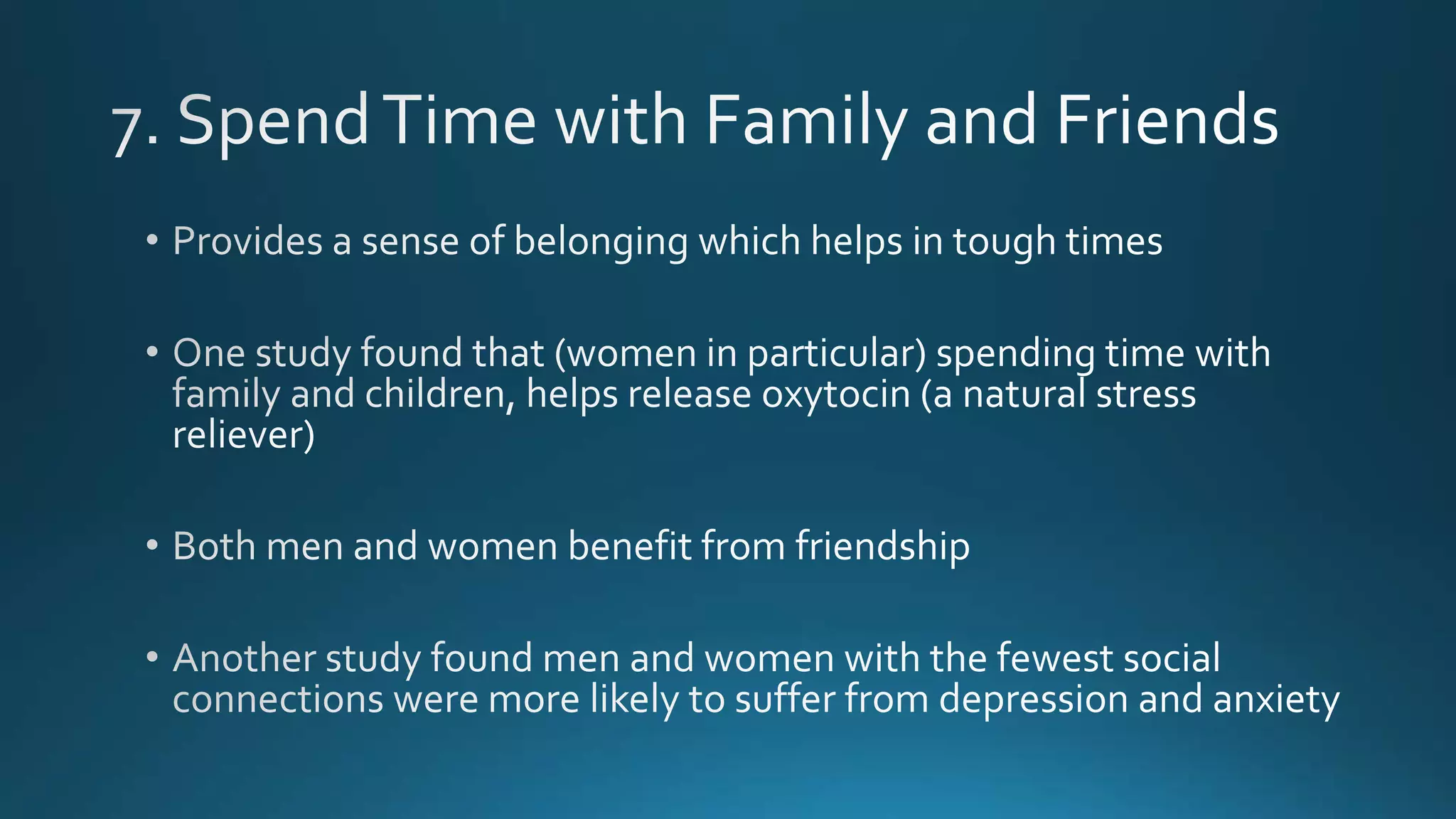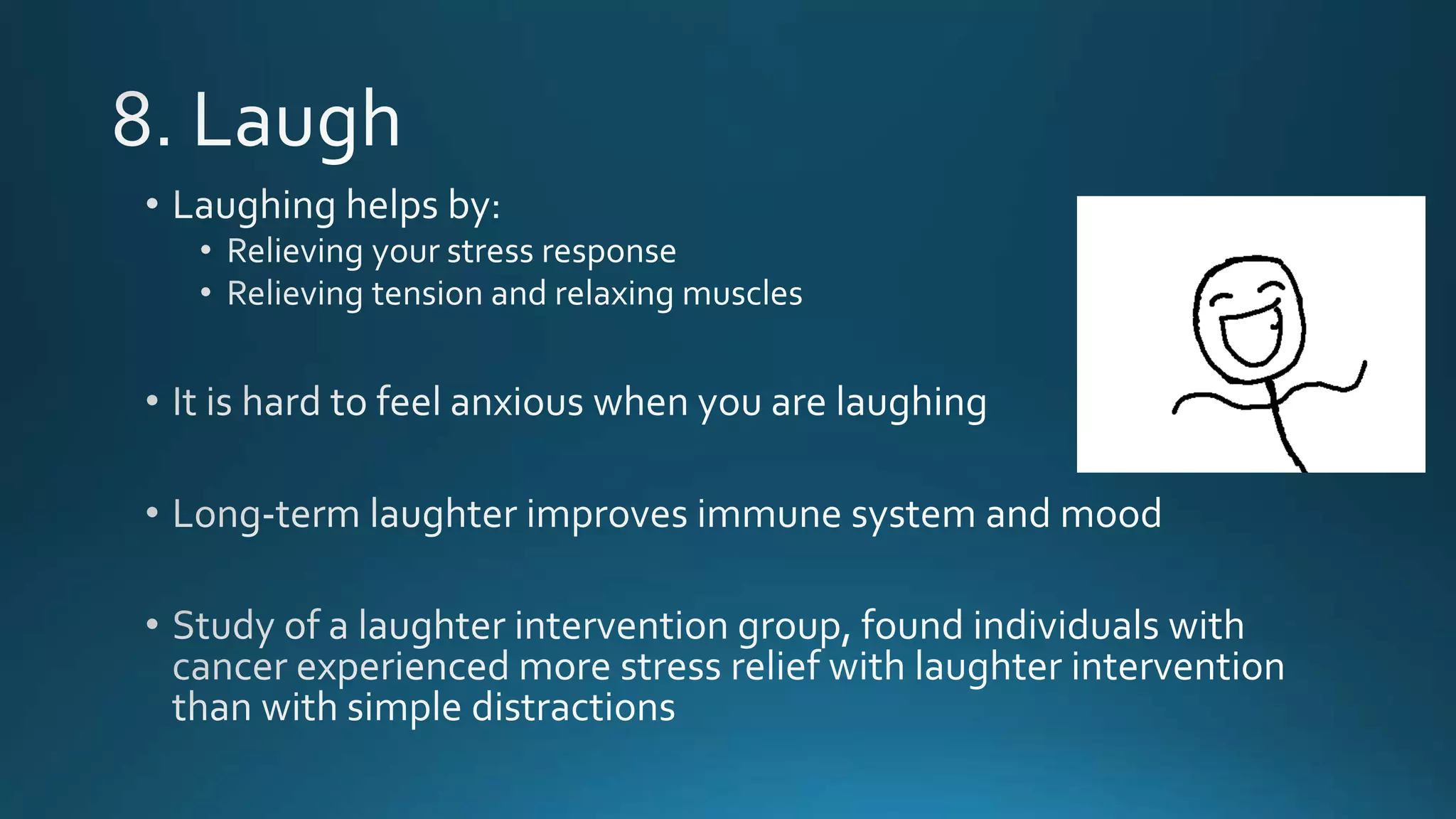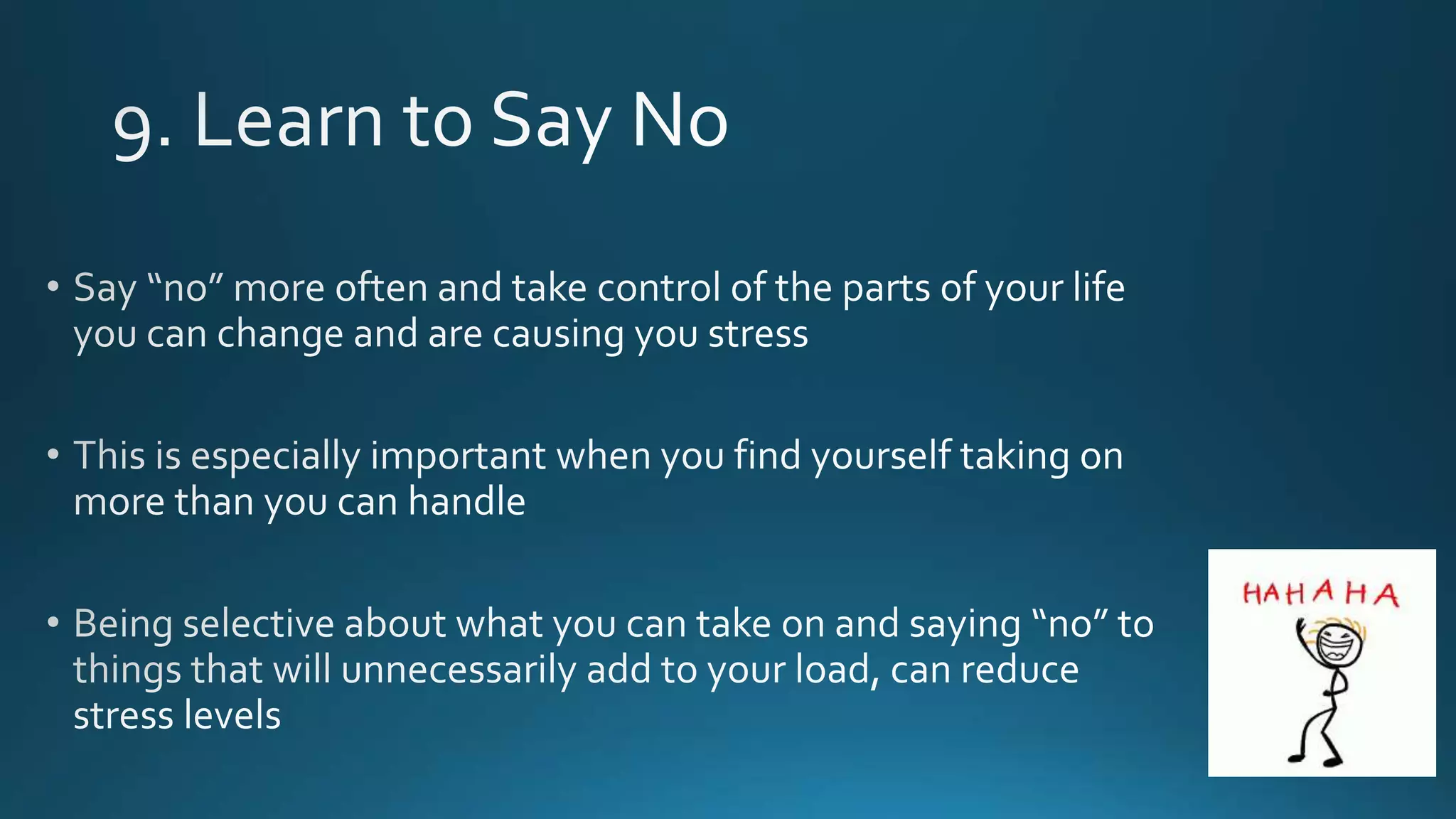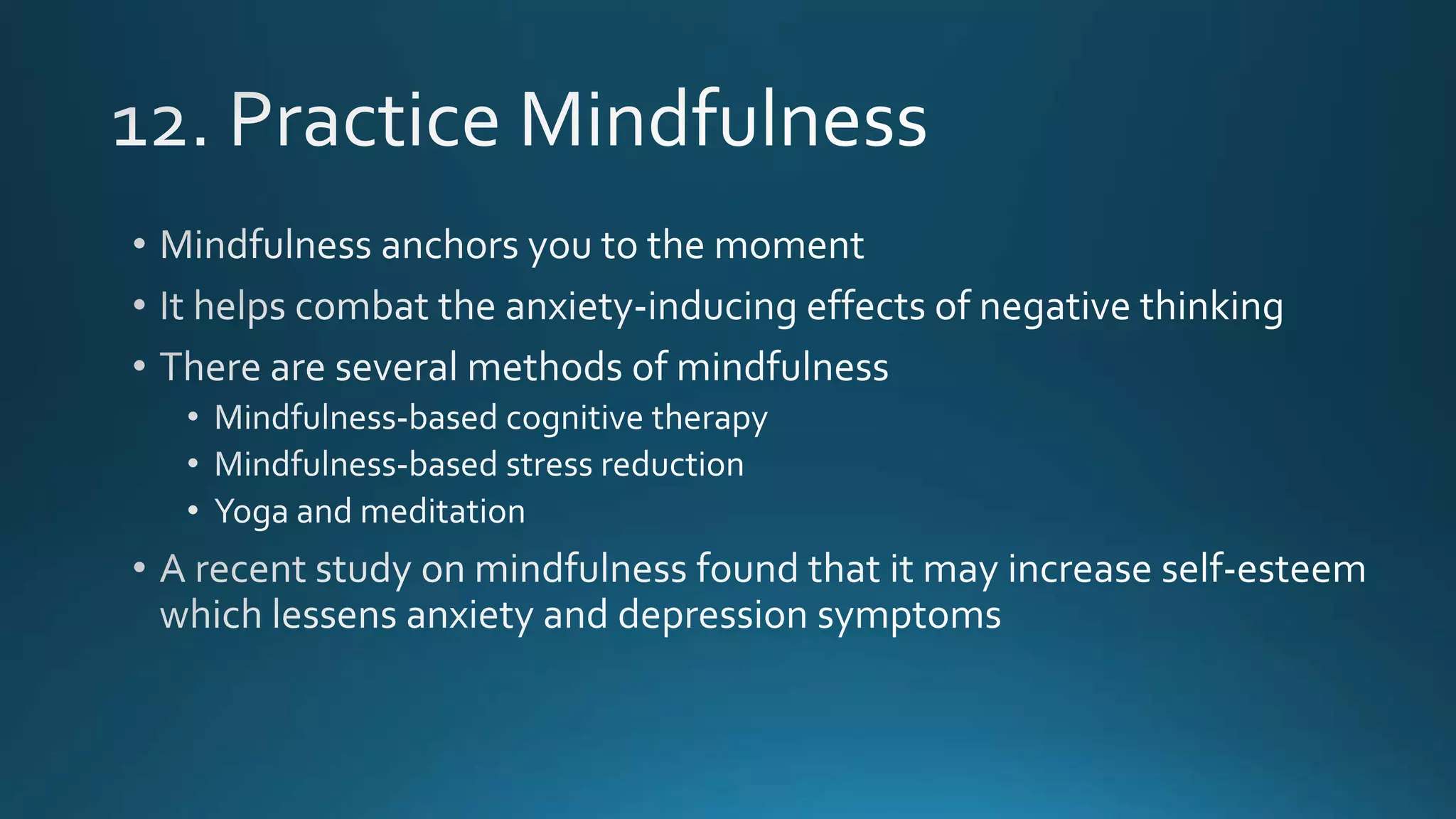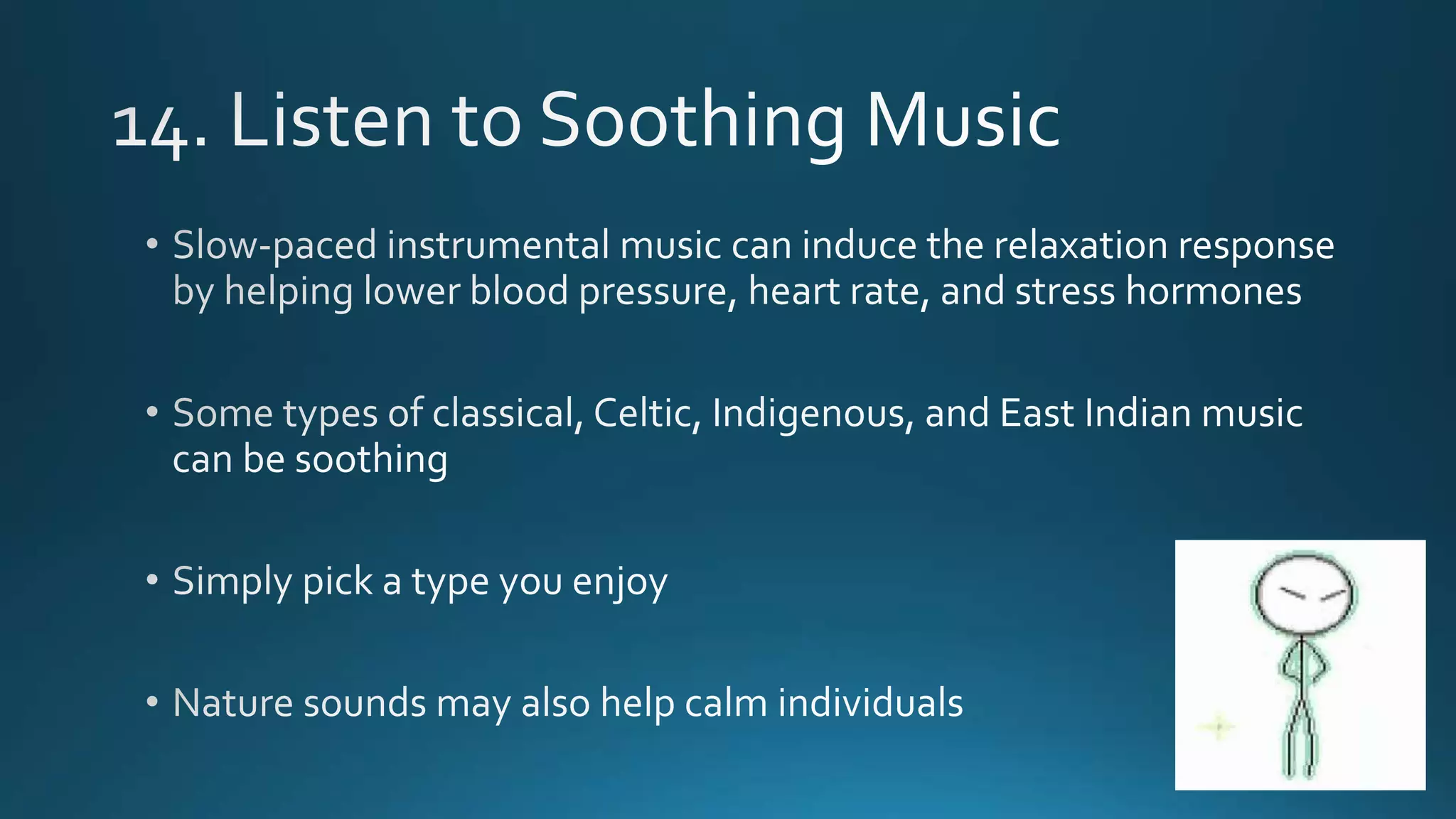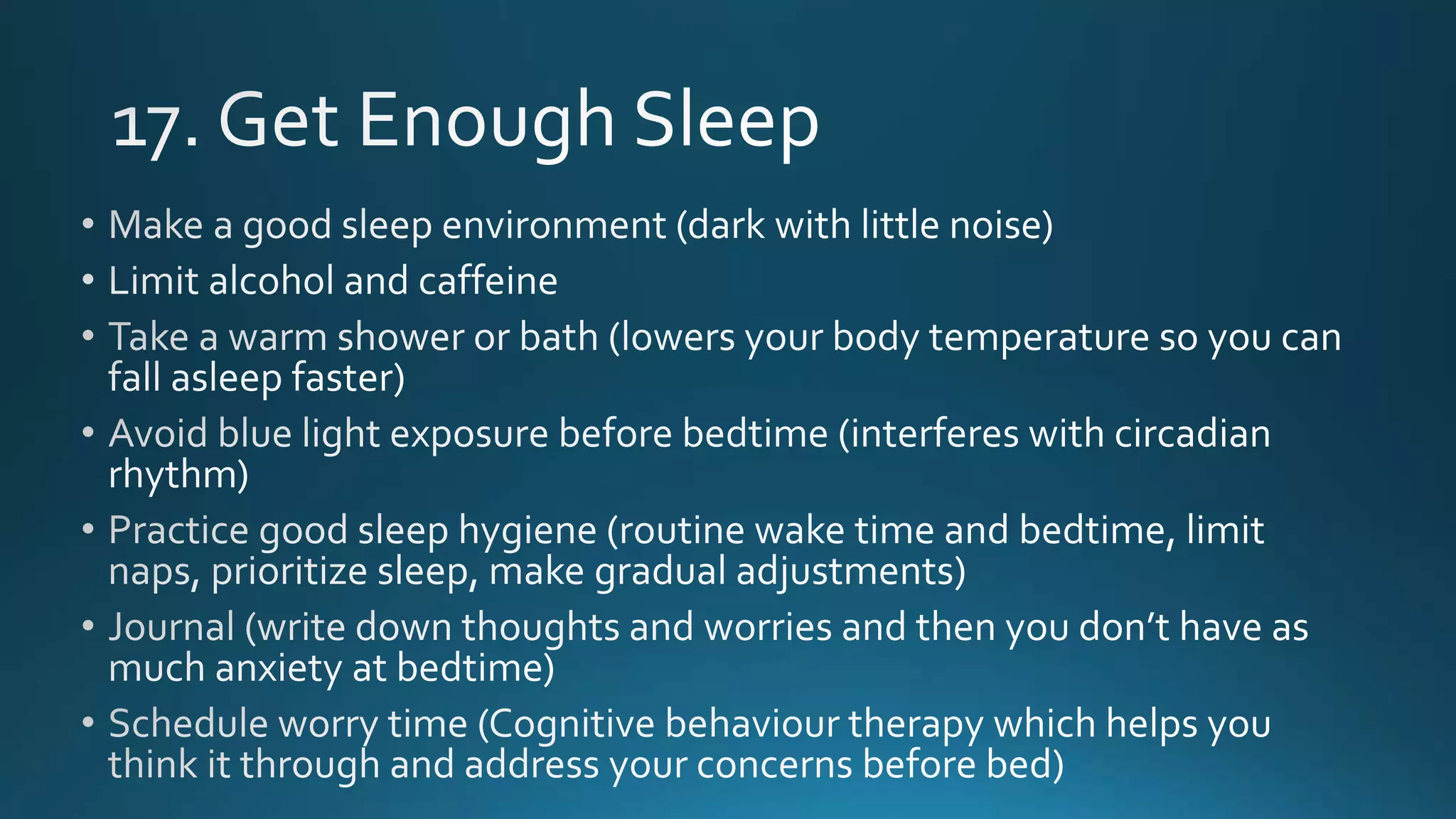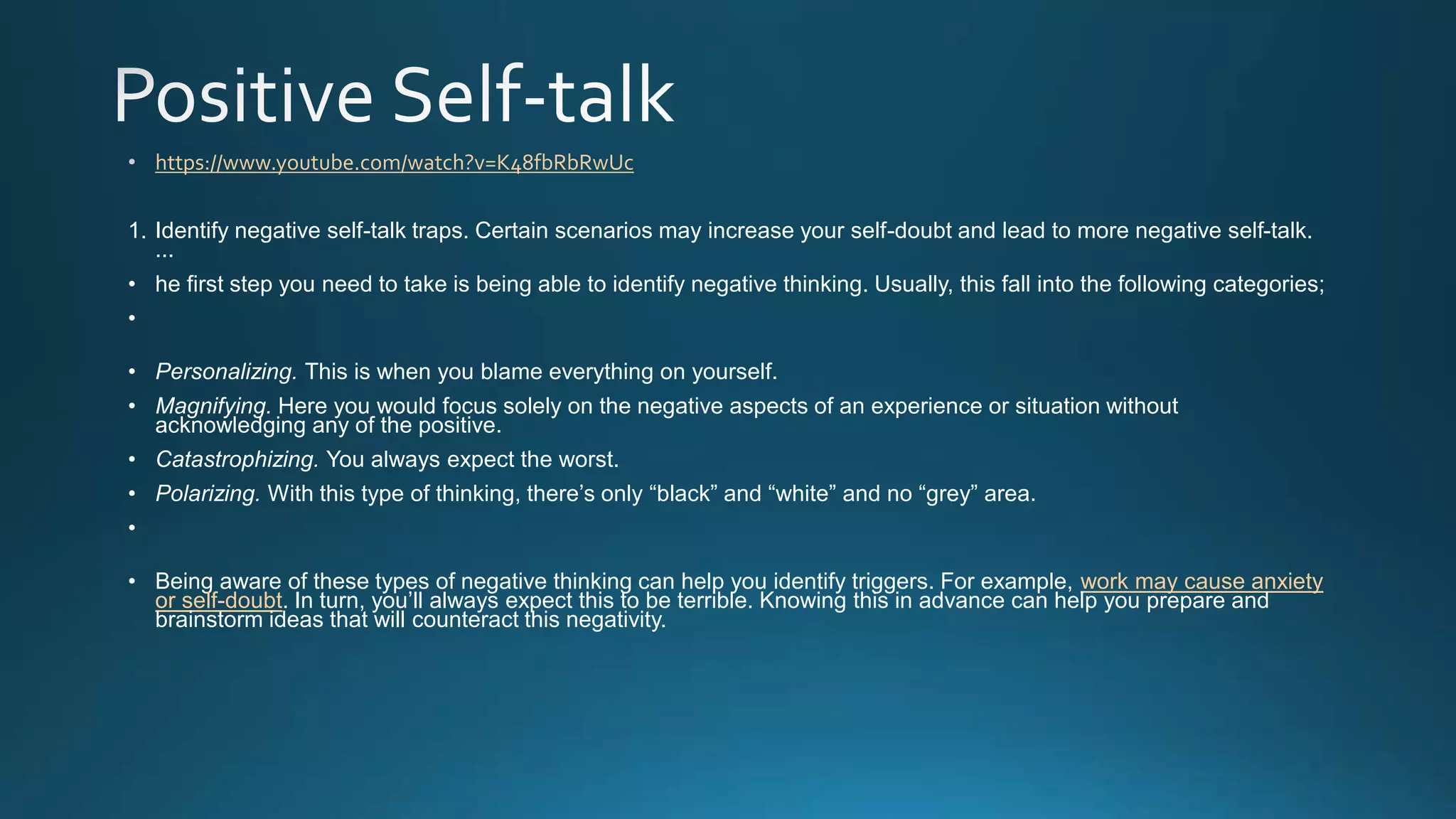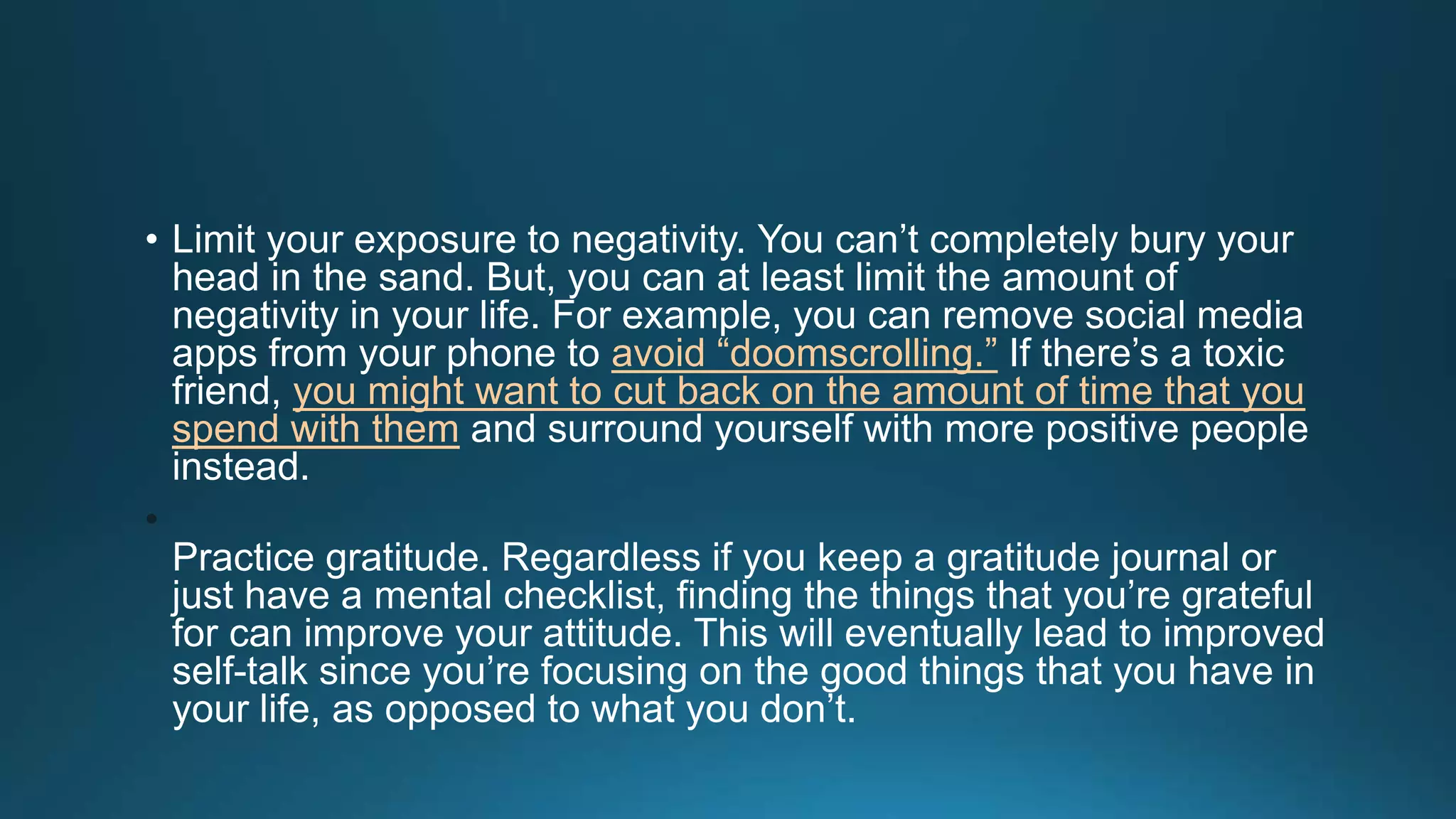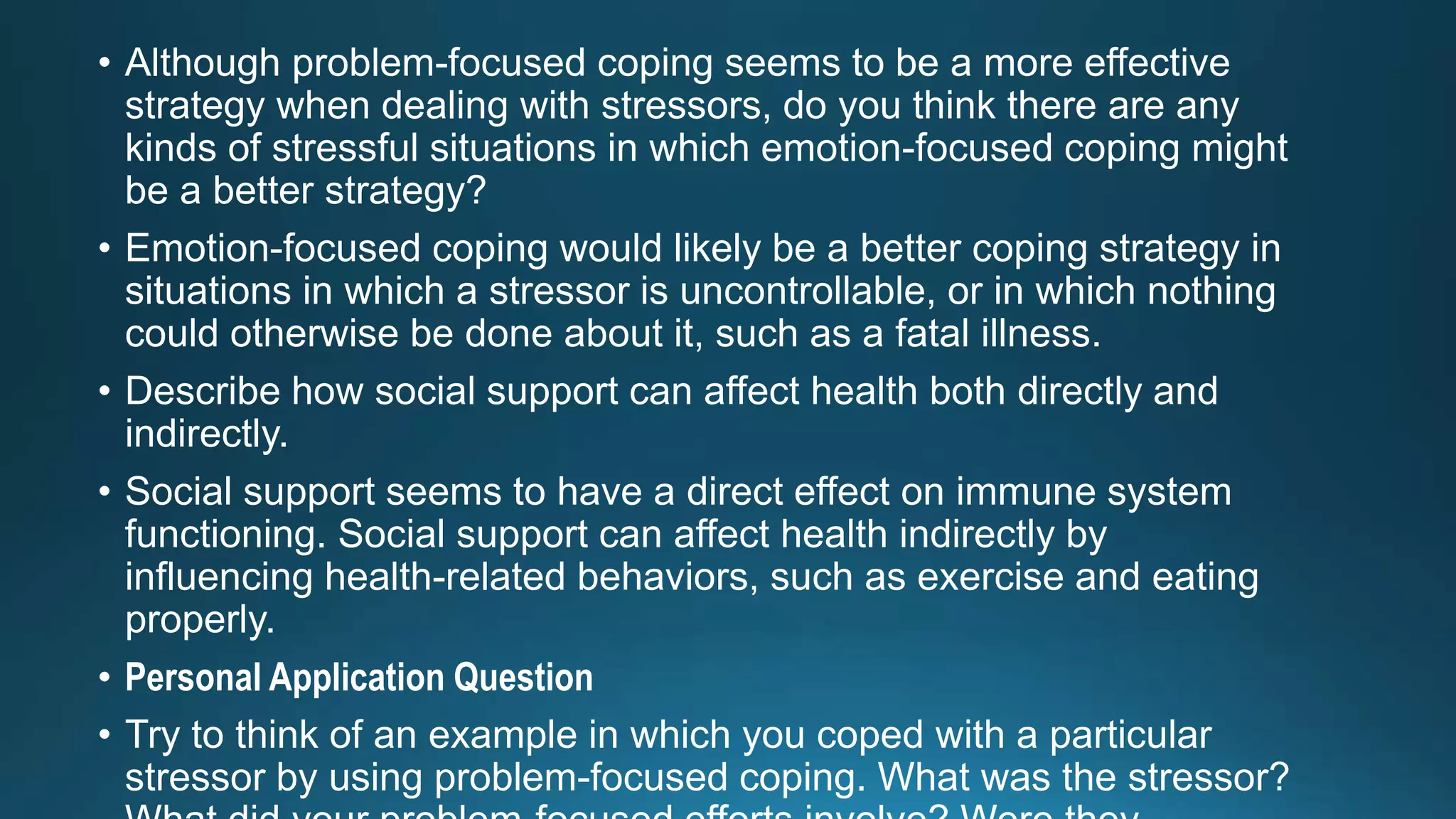Stress is the body's response to perceived threats or demands. It involves physiological reactions like increased heart rate and hormones like cortisol. Prolonged stress can negatively impact health. Early pioneers like Walter Cannon studied stress and identified the fight or flight response. Later, Hans Selye proposed the general adaptation syndrome model of stress involving alarm, resistance, and exhaustion stages. The transactional model views stress as resulting from an imbalance between demands and one's ability to cope, determined through cognitive appraisals. Acute and chronic stress can have positive or negative impacts depending on factors like duration and perception.

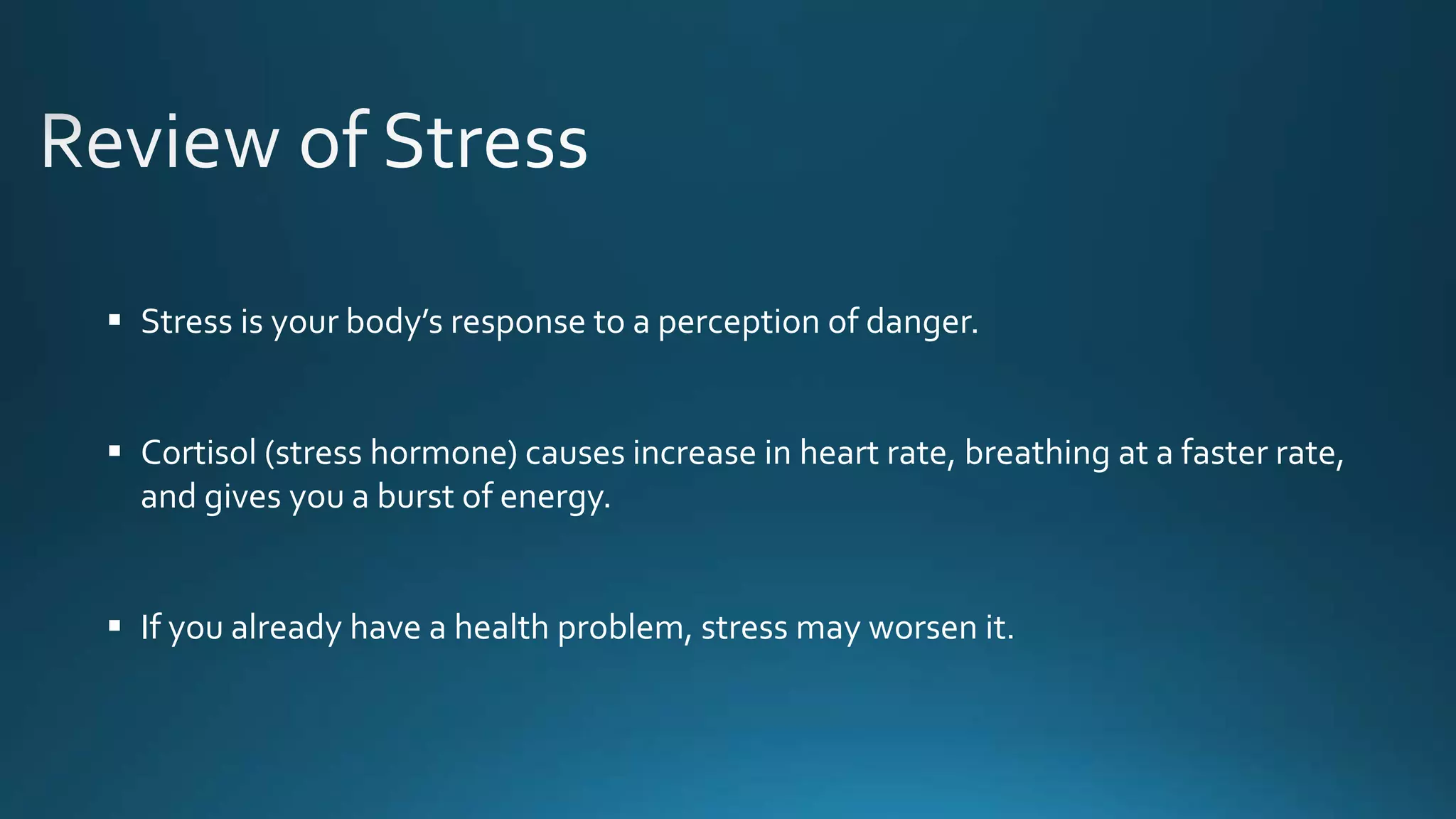





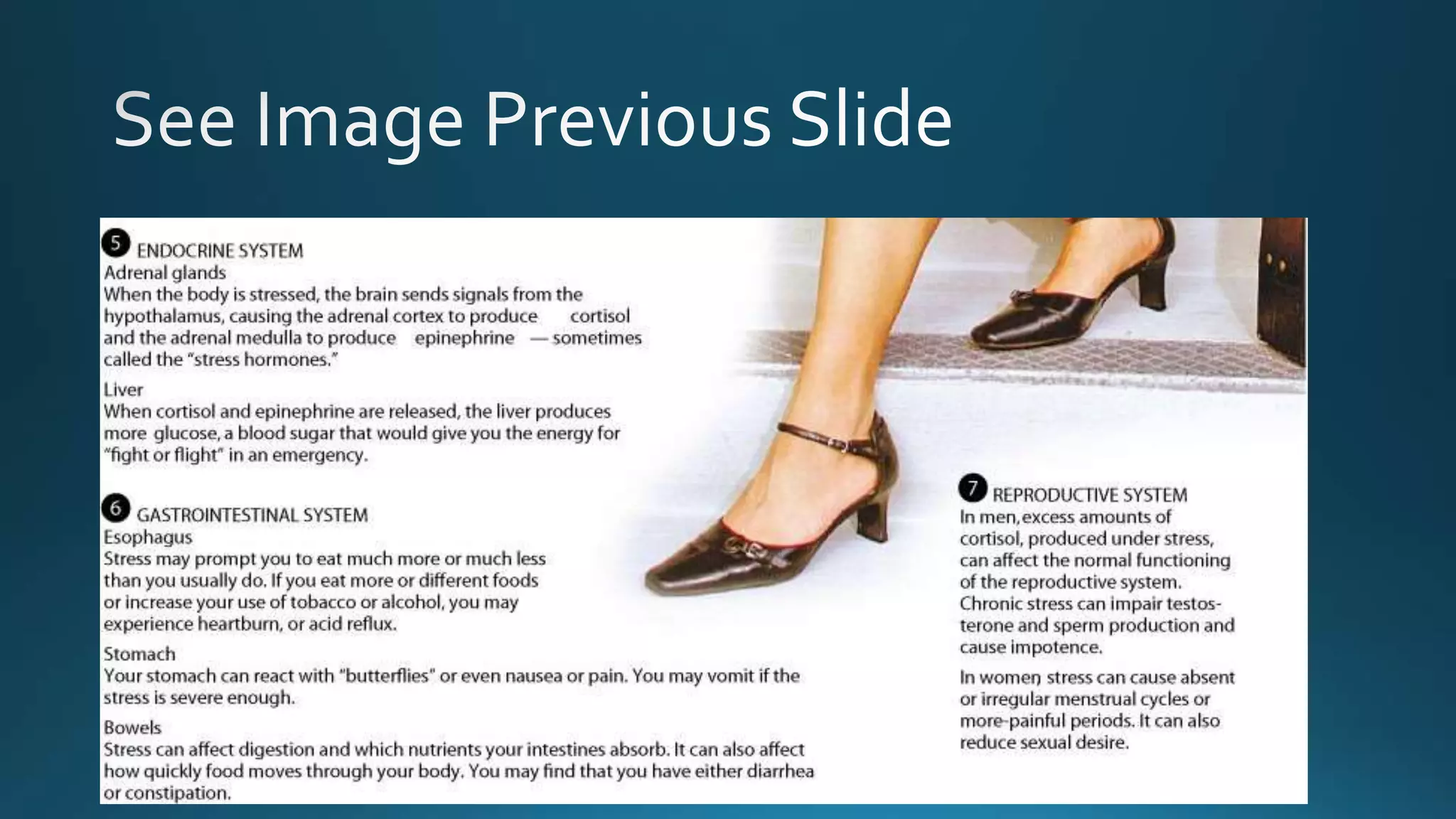




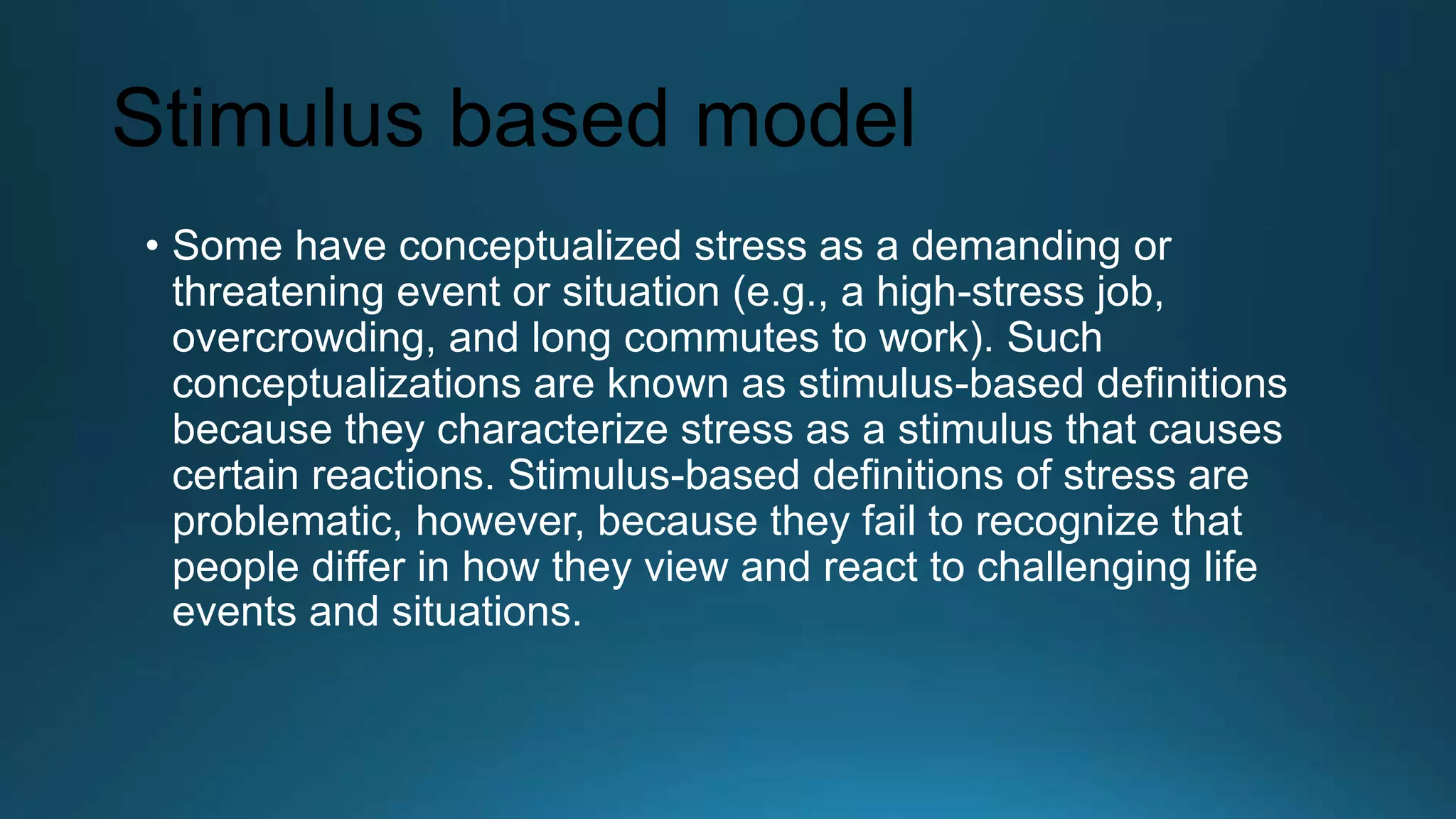

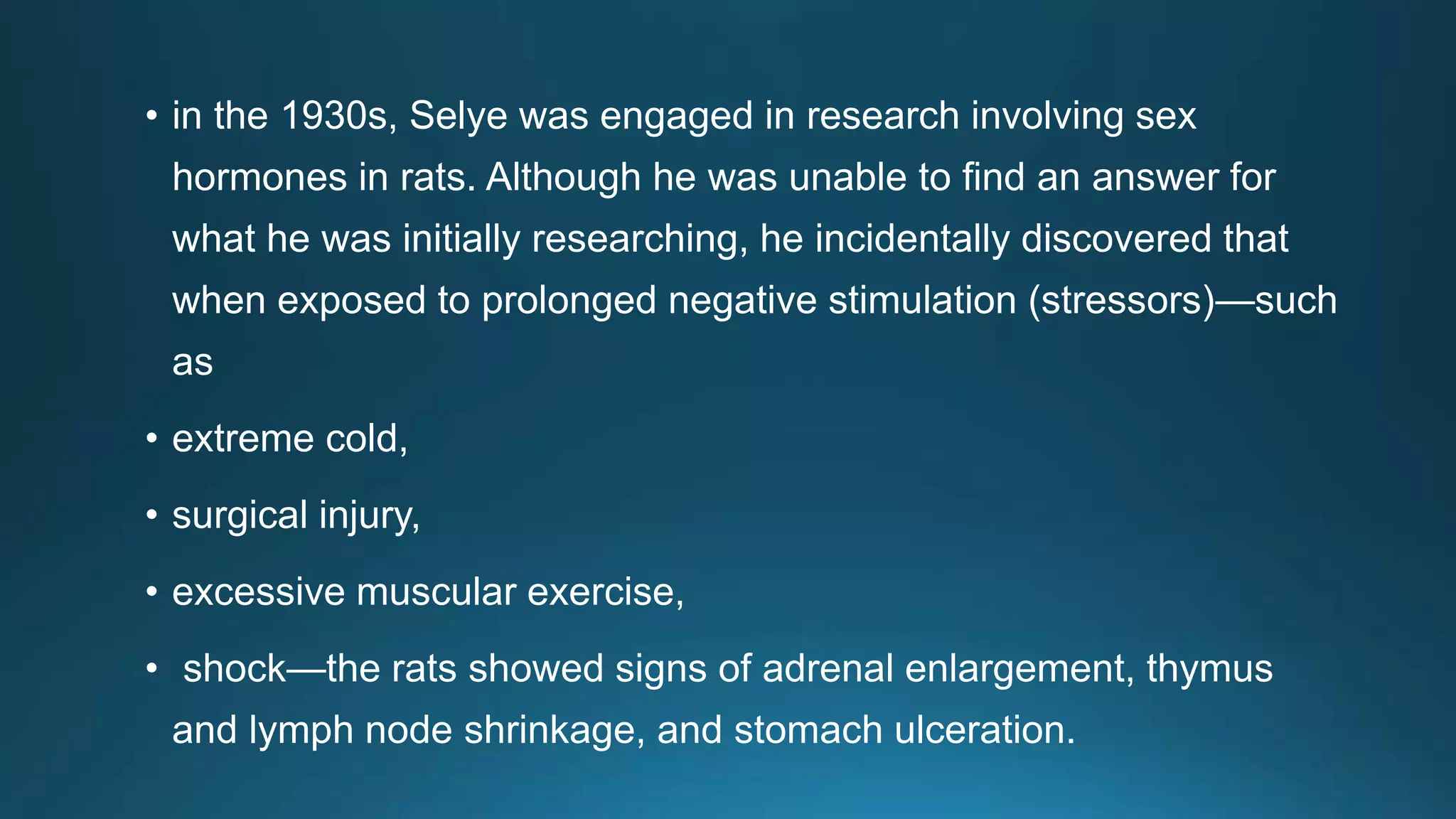



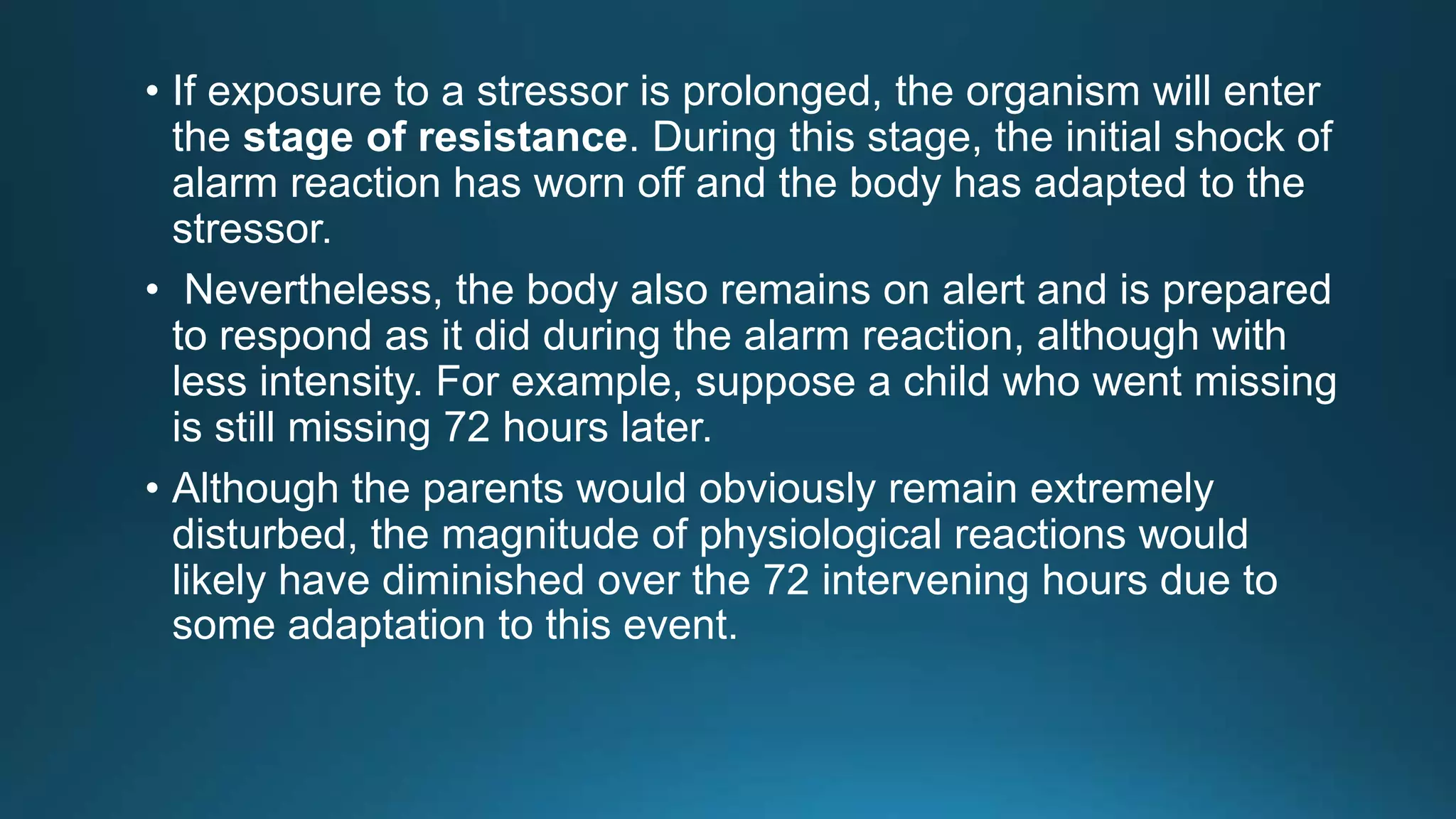



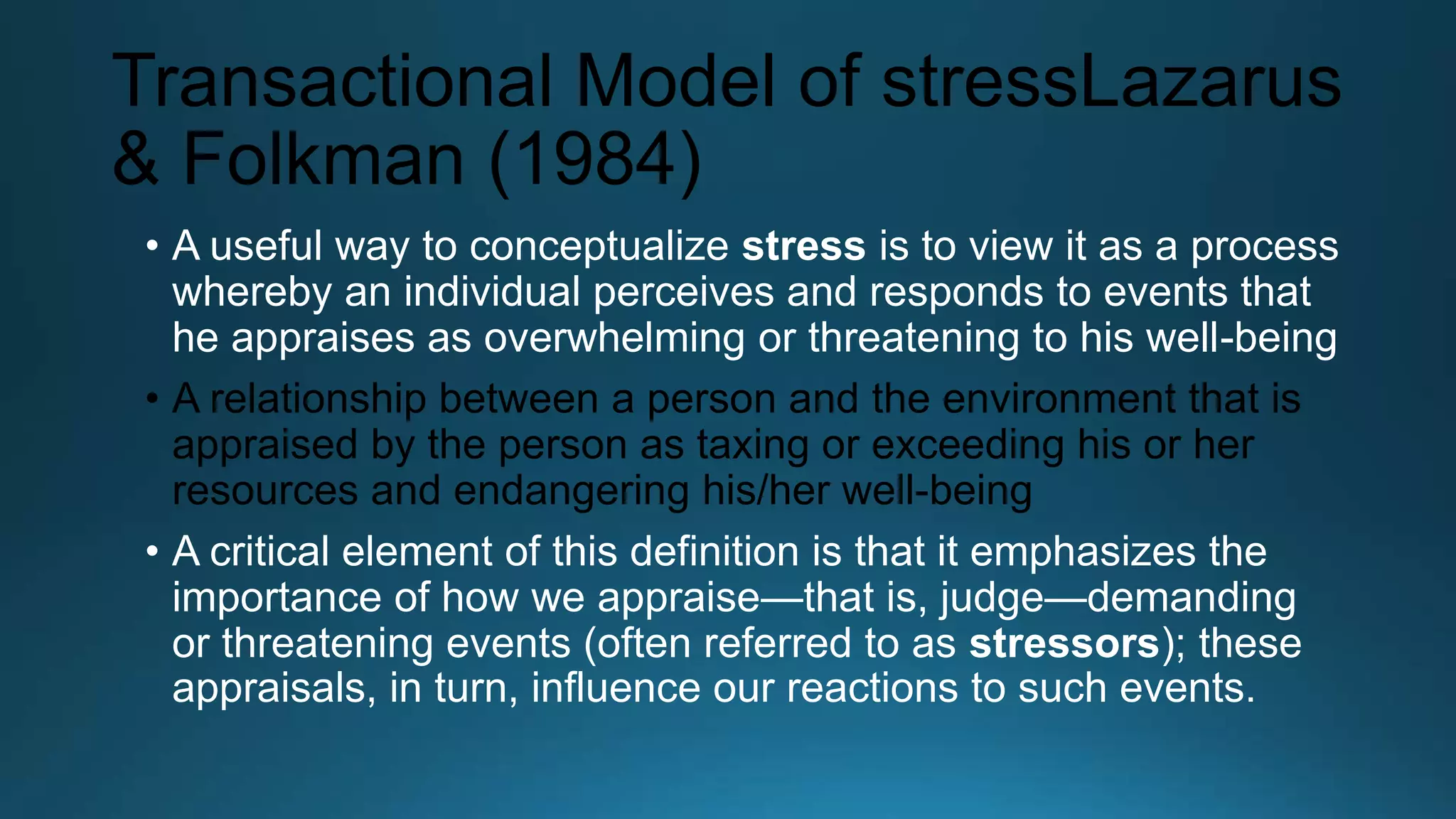


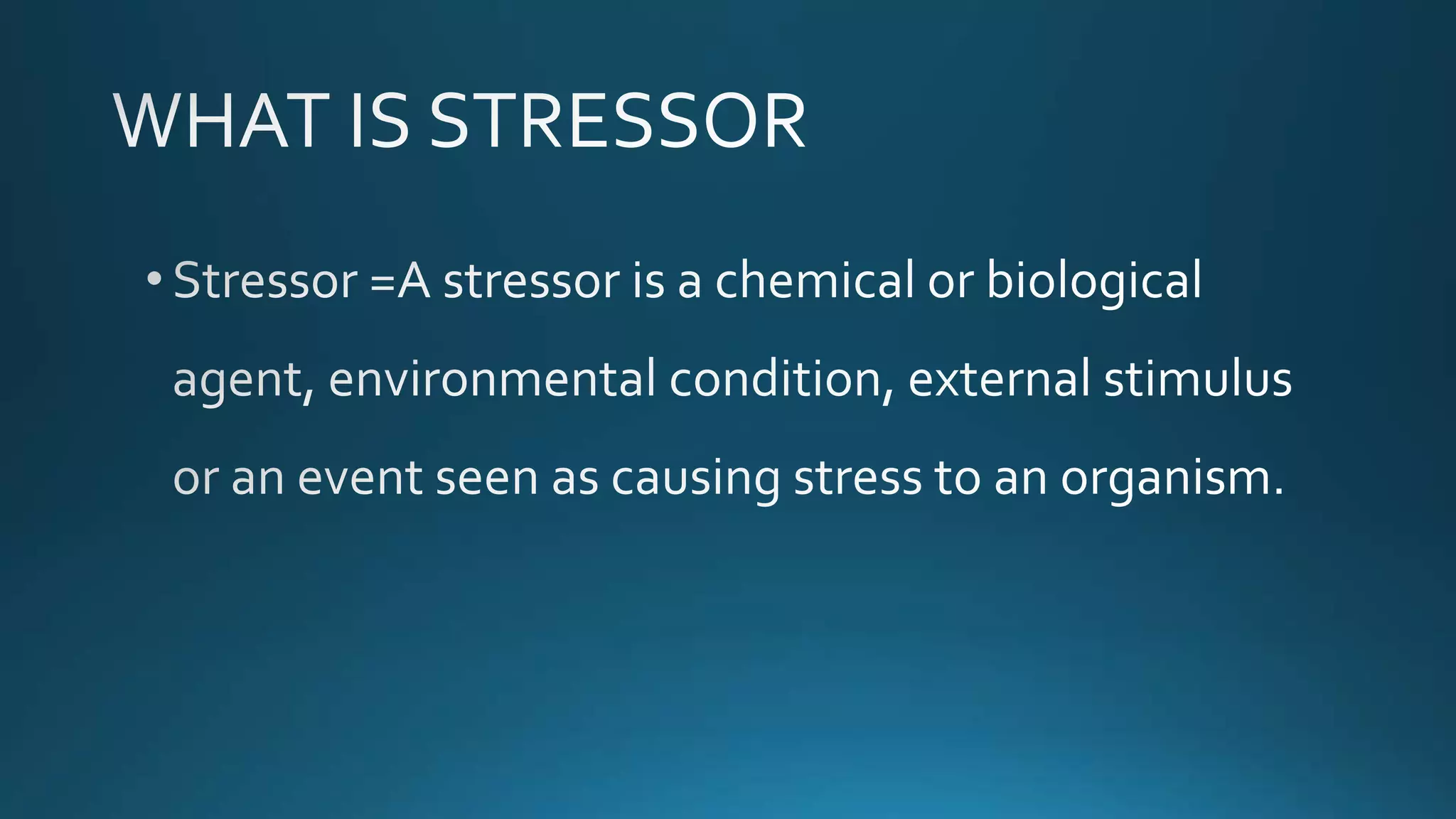

![• TRAUMATIC EVENTS
• Some stressors involve traumatic events or situations in which a person
is exposed to actual or threatened death or serious injury. Stressors in
this category include exposure to military combat, threatened or actual
physical assaults (e.g., physical attacks, sexual assault, robbery,
childhood abuse), terrorist attacks, natural disasters (e.g., earthquakes,
floods, hurricanes), and automobile accidents. Men, non-Whites, and
individuals in lower socioeconomic status (SES) groups report
experiencing a greater number of traumatic events than do women,
Whites, and individuals in higher SES groups (Hatch & Dohrenwend,
2007). Some individuals who are exposed to stressors of extreme
magnitude develop post-traumatic stress disorder (PTSD): a chronic
stress reaction characterized by experiences and behaviors that may
include intrusive and painful memories of the stressor event, jumpiness,
persistent negative emotional states, detachment from others, angry
outbursts, and avoidance of reminders of the event (American
Psychiatric Association [APA], 2013).](https://image.slidesharecdn.com/stressmanagement-230903074354-de7038f1/75/Stress-Management-pptx-28-2048.jpg)
![LIFE CHANGES
[link]
• Some fairly typical life events, such as moving, can be significant
stressors. Even when the move is intentional and positive, the
amount of resulting change in daily life can cause stress. (credit:
“Jellaluna”/Flickr)
•](https://image.slidesharecdn.com/stressmanagement-230903074354-de7038f1/75/Stress-Management-pptx-29-2048.jpg)
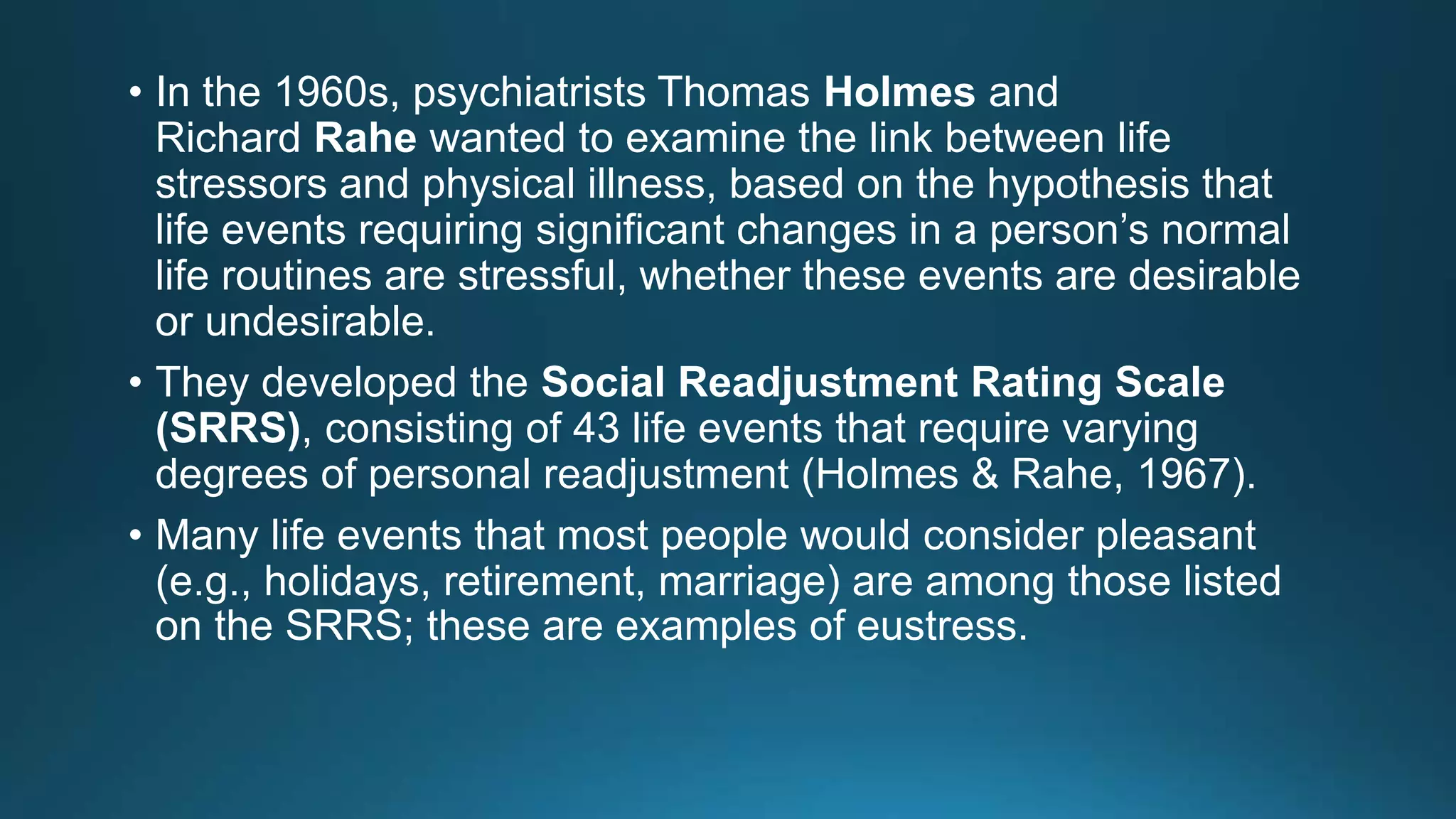

![• HASSLES
• Potential stressors do not always involve major life
events. Daily hassles—the minor irritations and annoyances
that are part of our everyday lives (e.g., rush hour traffic, lost
keys, obnoxious coworkers, inclement weather, arguments
with friends or family)—can build on one another and leave us
just as stressed as life change events ([link]) (Kanner, Coyne,
Schaefer, & Lazarus, 1981).
• Daily commutes, whether (a) on the road or (b) via public
transportation, can be hassles that contribute to our feelings
of everyday stress.](https://image.slidesharecdn.com/stressmanagement-230903074354-de7038f1/75/Stress-Management-pptx-32-2048.jpg)

